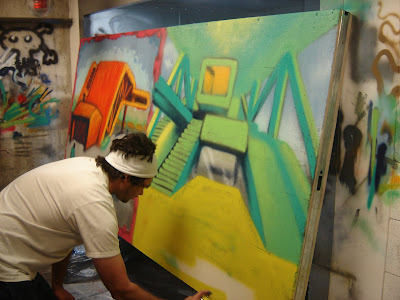1. Writing material (as a parchment or tablet) used one or more times after earlier writing has been erased.
2. Something having usually diverse layers or aspects apparent beneath the surface.
3. Allowing for the writing and rewriting of spaces.
4. Recognizing not only that spaces will be used, but also misused.
5. Creating a layered history that reaches to the past yet looks to the future.
One of the core ideas that I was dealing with in my graduate thesis project, The Architecture of Hip Hop, was that of architecture as palimpsest or architecture as a palimpsestic canvas. The above definition(s) are literal and figurative interpretations of a palimpsest. This not only allows for an architecture that is transformative, but an architecture that is embedded with history and meaning. Following this train of thought it only makes sense that the means of representation for such a project should employ the same attitude. Graffiti, by nature, is palimpsestic. Not only does graffiti re-write itself over and over again throughout its creation, but it also re-writes the physical and social contexts on which it's applied.
To help in the creation of these renderings I joined forces with a local graffiti artist, Kier. Together, Kier and I, seized control of the School of Architecture's paint room for several hours and developed the following renderings. Balkrishna Doshi once said, "The process is often more interesting than the end result." I would have to agree.







































No comments:
Post a Comment